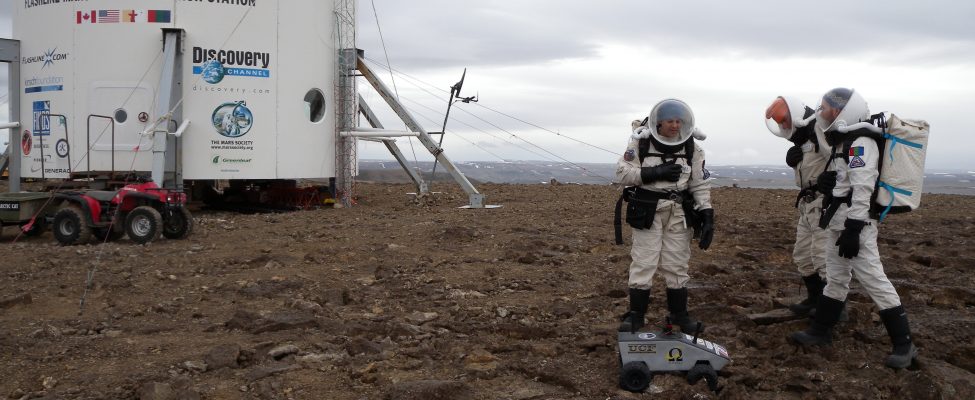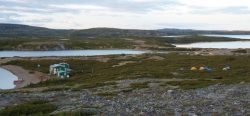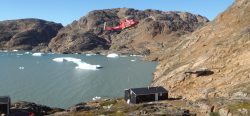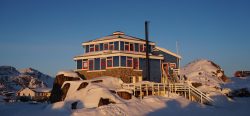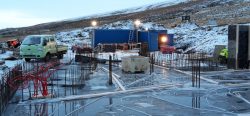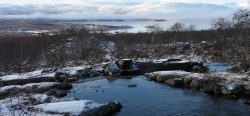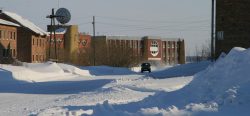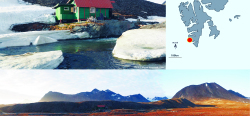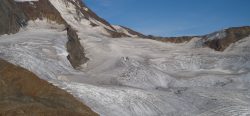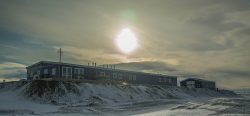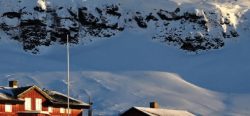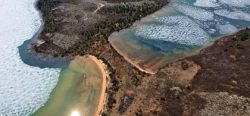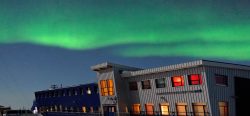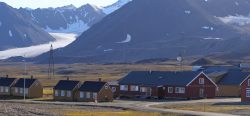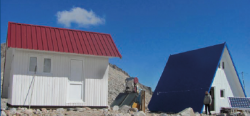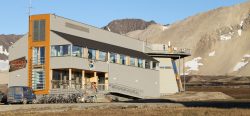Contact Details
11111 W 8th Ave.,
Suite A, Lakewood,
CO 80215,USA
NAME AND OWNER
The Flashline Mars ArcticDefinitions of the Arctic vary according to environmental, geographical, political, cultural and scientific perspectives. Some scientists define the Arctic as areas having a high latitude, long winters, short, cool summers,... More Research Station (FMARS) is one of two simulated Mars habitats owned and operated by The Mars Society, Inc., a U.S. non-profit organization.
LOCATION
The station is located on Devon Island, a Mars analog environment and polar desert, approximately 165 kilometers (103 mi) north east of the hamlet of Resolute in Nunavut, Canada. The station is situated on Haynes Ridge, overlooking the Haughton impact crater, a 23 km diameter crater formed approximately 39 million years ago (late Eocene). The location is approximately 1,609 km (1,000 mi; 869 nmi) from the geographic North Pole and approximately 1,287 km (800 mi; 695 nmi) from the magnetic North Pole. Coordinates: 75°25’52.75°N 089°49’24.19°W.
BIODIVERSITY AND NATURAL ENVIRONMENT
Because of its relatively high elevation and its extreme northern latitude, Devon Island supports only a meagre population of musk oxen and small birds and mammals; the island does support hypolith communities. Animal life is concentrated in the Truelove Lowland area of the island, which has a favorable microclimate and supports relatively lush ArcticDefinitions of the Arctic vary according to environmental, geographical, political, cultural and scientific perspectives. Some scientists define the Arctic as areas having a high latitude, long winters, short, cool summers,... More vegetation. Temperatures during the brief (40 to 55 days) growing season seldom exceed 10 °C (50 °F), and in winter can plunge to as low as -50 °C (-58 °F). With a polar desert ecologyThe study of living organisms in their environment, including where they are found and how they interact with their physical environment and with each other, for example through food webs.... More, Devon Island receives very little precipitation. Cape Liddon is an Important Bird Area (IBA) notable for its Black Guillemot and Northern Fulmar populations. Cape Vera, another IBA site, is also noted for its Northern Fulmar population. Devon Island is also notable for the presence of the Haughton impact crater, created some 39 million years ago when a meteorite about 2 km (1.2 mi) in diameter crashed into what were then forests. The impact left a crater approximately 23 km (14 mi) in diameter, which was a lake for several million years.
HISTORY AND FACILITIES
FMARS was built by The Mars Society in 2001, and since then it has been used to conduct planetological, geological, biological, and climatology studies under conditions similar to those found on Mars. These studies have allowed them to develop field tactics, test habitat design features, tools, and technologies, and to assess crew selection protocols essential to future human spaceflight.. The project’s final cost was $1.3 million US, raised through sponsorships with major companies. Flashline.com, an internet business, donated $175,000 and was granted the right to affix its name to the project. Other major sponsors included the Kirsch Foundation, the Foundation for the International Non-governmental Development of Space (FINDS) and the Discovery Channel (which purchased exclusive English-language TV rights to the station’s activities for the first two years).
GENERAL RESEARCH AND DATABASES
Experiments at Flashline primarily focus on biodiversityBiological diversity. The many and varied forms of life on Earth (collectively known as biota). As well as diversity of species (species diversity), there is also diversity within populations of a... More surveys of the arcticDefinitions of the Arctic vary according to environmental, geographical, political, cultural and scientific perspectives. Some scientists define the Arctic as areas having a high latitude, long winters, short, cool summers,... More desert and geological/geophysical study of the Haughton Crater area. Other experiments included a geophysical analysis of Haughton Crater which answered key questions on the physical characteristics of the 31-million year old meteor impactor and examined microfossils in crater soil deposits. Logistics and engineering experiments are also conducted. the Geophysical Department of the Carnegie Institute.
HUMAN DIMENSION
The Mars Society invites researchers to live and work at the station typically for one month during the arcticDefinitions of the Arctic vary according to environmental, geographical, political, cultural and scientific perspectives. Some scientists define the Arctic as areas having a high latitude, long winters, short, cool summers,... More summer, although the organization is currently developing a one-year mission (MA365). Expeditions typically consist of a crew of between 6 and 7 individuals. Typically 1 to 2 months prior to departing for the Canadian ArcticDefinitions of the Arctic vary according to environmental, geographical, political, cultural and scientific perspectives. Some scientists define the Arctic as areas having a high latitude, long winters, short, cool summers,... More, the crew gathers for an initial face-to-face meeting and training session in Colorado, USA. The station’s primary mission is to help develop key knowledge needed to prepare for human Mars exploration, and to inspire the public by making real the vision of human exploration of Mars. The society uses the station to conduct geological and biological exploration under conditions similar to those found on Mars, to develop field tactics based on those explorations, to test habitat design features, tools, and technologies, and to assess crew selection protocols. All research conducted outside the station must include one crew member who has the sole responsibility to stand watch to protect the crew from polar bears. This crew member is typically armed with a pump-action shotgun. Crew members also carry bear deterrent devices known as bear bangers. No polar bears have yet been encountered by a crew on any Mars Society expedition, although signs of their presence on the island are regularly seen, and at least one encounter has occurred by members of other groups. Database access is available upon written request to Chief Archivist, Frank Crossman, at: fcrossman@marssociety.org
ACCESS
Due to the harsh and dangerous environment of the ArcticDefinitions of the Arctic vary according to environmental, geographical, political, cultural and scientific perspectives. Some scientists define the Arctic as areas having a high latitude, long winters, short, cool summers,... More, crew members must file an application for consideration, and complete orientation and training prior to visiting the station. Crew members must travel by commercial airline to Resolute Bay, Canada. There they spend a few days organizing their supplies and equipment and conducting some final training while waiting for clear weather. They then board Twin Otter aircraft for the final leg of the journey to Devon Island. These aircraft land on a dirt airstrip located on Devon Island near the station. The primary means of crew transportation while on the island is by All-Terrain Vehicles (ATVs).
